The celebrated Mr. K spotlights a small-time publisher that boasted some big-time talent…
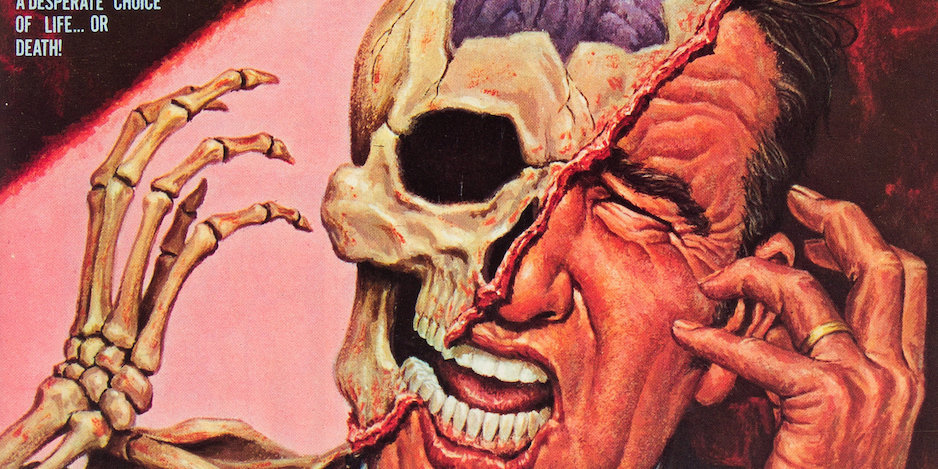
By PAUL KUPPERBERG
Named for its founders, Marvel production manager Sol Brodsky and former publisher of illegal reprints, Israel Waldman, Skywald Comics was an interesting, albeit low-rent, publishing outfit that stuttered along for four years (1971 – 1975), producing around 90 separate issues over 20 series.
Waldman had been the mastermind behind I.W. Comics (1958 – 1964), a company that published unauthorized reprints under new covers, many by Ross Andru and Mike Esposito, Jack Abel, Carl Burgos, and others, with lettering by the prolific Ben Oda. Waldman would buy up the used printing plates from mostly (but not exclusively) out-of-business publishers like Quality Comics, Avon, Magazine Management, and Toby and reuse them without bothering with details like copyrights and trademarks.
According to historian Don Markstein, “Waldman was able to sell them cheaply because in many cases, he was able to supply the letterpress plates they were printed from, and thus avoid paying for new ones.” The I.W. titles were sold primarily through discount outlets and grocery chains and as “three for a quarter” bagged comics.
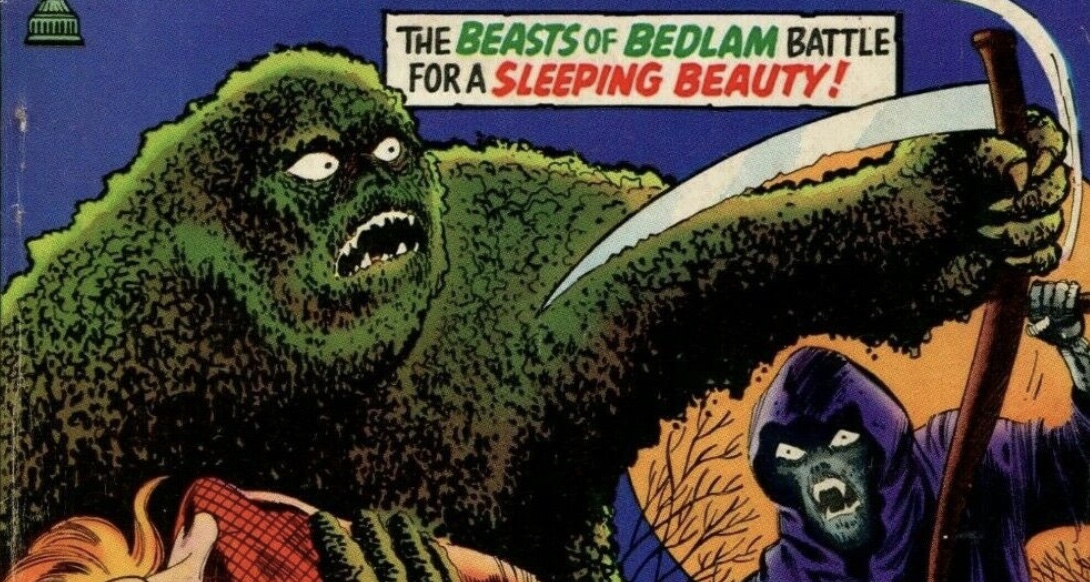
In 1971, Waldman and his inventory of reprints joined forces with former Marvel production manager Sol Brodsky (who returned to Marvel post-Skywald) and Skywald was born. Brodsky brought in former Stan Lee assistant and Warren Magazine writer and editor Alan Hewetson to edit the books, which he apparently did from his home in Canada, making only periodic trips to New York City.
I haven’t done the math (I hate math!), but it seems that a good 60 to 70 percent of Skywald’s publications were reprints, some of which were revised and touched up to give the fashions and dialogue in these 1950s stories a more contemporary feel.
Their 25-cent, 52-page color magazines usually contained a new 10-to-15-page lead story backed by those reprints. Their 64-page black-and-white magazines were also heavily weighted toward reprints. I don’t know what sort of rates they were paying — one would think with all those free reprints they could afford to outdo Marvel and DC — but they did manage to attract some impressive talent, at least in the first year or two. Contributors included writers Len Wein, Steve Englehart, Gerry Conway, Doug Moench and Marv Wolfman, and such artists as Bill Everett, Tom Sutton, Rick Buckler, Pablo Marcos, Vince Colletta, Syd Shores and Gene Day.

Hewetson, who died in 2004, attributed the demise of Skywald to the competition. “Our issues were selling well, and some sold out. Such returns as we received were shipped overseas, mainly to England, where they sold out completely… When Marvel entered the game with countless [black-and-white horror] titles gutting [sic] the newsstand, their distributor was so powerful they denied Skywald access to all but the very largest newsstands, so our presence was minimal, and fans and readers simply couldn’t find us.”
Here then, in alphabetical order, MY 13 FAVORITE SKYWALD COMICS COVERS, in alphabetical order:
—
Blazing Six-Guns #1 (Feb. 1971). Cover by Dick Ayers and John Severin. The success of 1969’s Butch Cassidy and the Sundance Kid (my favorite modern Western, written by one of my favorite authors and screenwriters, William Goldman, starring Paul Newman and Robert Redford in the title roles, and directed by George Roy Hill) must have still been on their minds a couple of years later when Skywald had launched. Both Butch and Sundance received their own titles, Sundance starring in a new 11-pager by Len Wein, Dick Ayers and John Tartaglione, followed by reprints from 1950s Avon, Charlton, and other titles. In this case, the Bolivian Army wasn’t needed to kill Sundance. The newsstand did it for them after two issues.

—
Butch Cassidy #3 (Oct. 1971). Cover by Ross Andru and Mike Esposito. Ditto for Butch, except he made it all the way to a third issue, with a lead 15-page story by Gary Friedrich, Andru and Esposito, and reprints from Quality Comics and others.
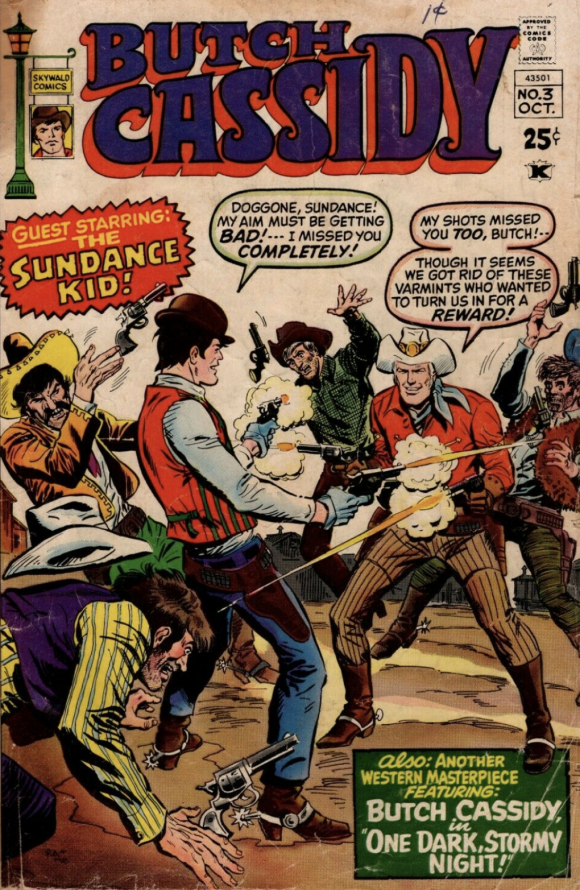
—
The Crime Machine #1 (Feb. 1971). Painted cover by Tom Palmer. While this black-and-white magazine (which ran all of two issues) was all Avon, etc., reprints, at least the stories being reprinted included some by Joe Kubert, Wally Wood and Syd Shores.
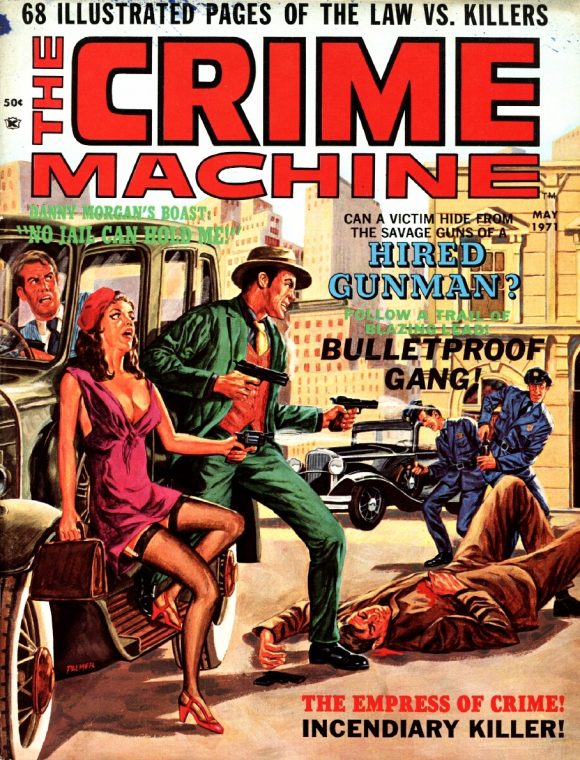
—
The Heap #1 (Sept. 1971). Cover by Tom Sutton and Jack Abel. This was the Heap… but it wasn’t the Heap, the swamp creature that first saw light as a back-up feature created by Harry Stein and Mort Leav for Hillman’s Air Fighter Comics in 1942 (and revived by Eclipse Comics in the 1980s). This Heap had a different origin and, unlike the original, though mute, he still retained his human intellect. With a lead story by Robert Kanigher, Sutton and Abel, this single issue was backed up by more reprints from Avon and Farrell.

—
Hell-Rider #1 (Aug. 1971). Painted cover by Harry Rosenbaum. A rarity among the Skywald black-and-whites, Hell-Rider #1 (of the two issues published) featured all-new material, written by Gary Friedrich (who a year later would work on another supernatural motorcyclist, Ghost Rider, for Marvel; almost 30 years later, Gary sued Marvel over creative credit on the character), with art by Andru and Esposito, John Celardo and Ayers.
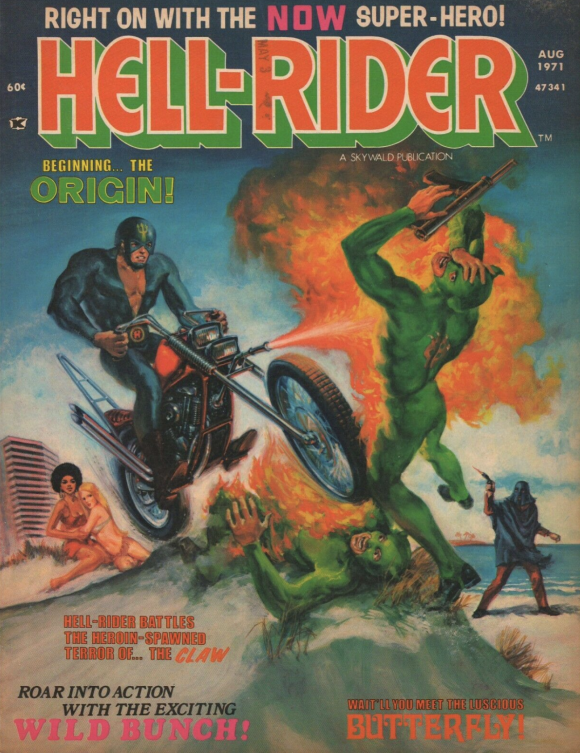
—
Jungle Adventures #3 (June 1971). Cover by Jack Katz and Frank Giacoia. Jungle Adventures, featuring Zangar, was your typical Tarzan wannabe, except this one is a red head. Concept aside, the strip was well-served by writer Gardner Fox, who was no stranger to writing slam-bang adventure stories in comics and in his numerous historical and science fiction novels.
The art was provided by the team of Katz and Giacoia. Katz, who died this past September at the age of 94, was an old pro, having begun his career in 1943 in the C.C. Beck/Pete Costanza studio before moving on to King Features (at one point assisting George Wunder on the Terry and the Pirates strip), and then to Standard, Atlas, and so on and so forth.
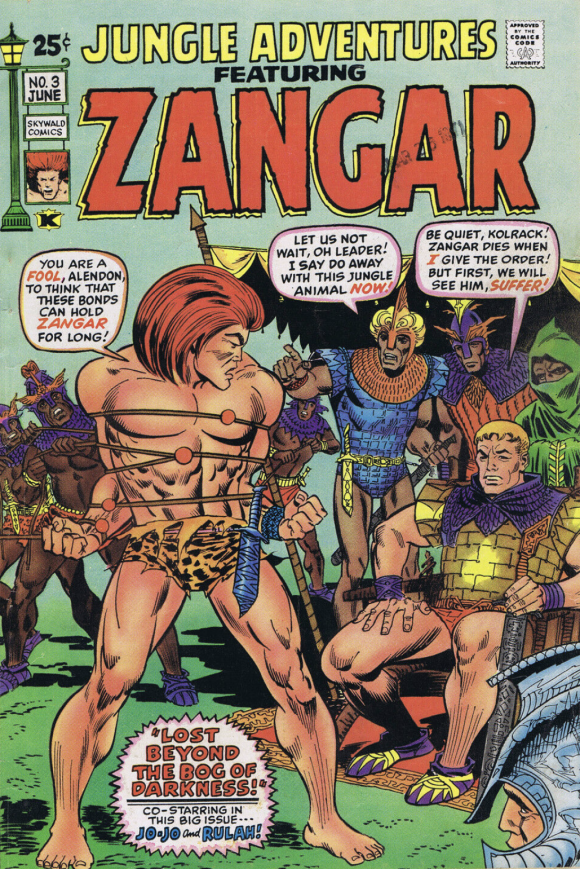
He’s best remembered for his self-published 768-page epic, First Kingdom, begun in 1974 and taking him 12 years to complete. He was inked on Zangar by Frank Giacoia, a more than capable penciller himself, but undoubtedly one of comics’ greatest inkers. Anyway, Jungle Adventures, with the rest of the pages filled with Jo-Jo the Congo King and Taanda the White Princess reprints was another case of a Skywald three-issues-and-out title.
—
Nightmare #6 (December 1971). Cover by Jeffrey Catherine Jones, signed as “J.” One of the longest running of the Skywald titles, 23 black-and-white magazine issues (Dec. 1970 – Feb. 1975), although the last seven issues appeared without a publisher’s brand. By the end, editor Hewetson seemed to be doing the majority of the writing and the artists were not exactly being pulled from the top rank of illustrators.
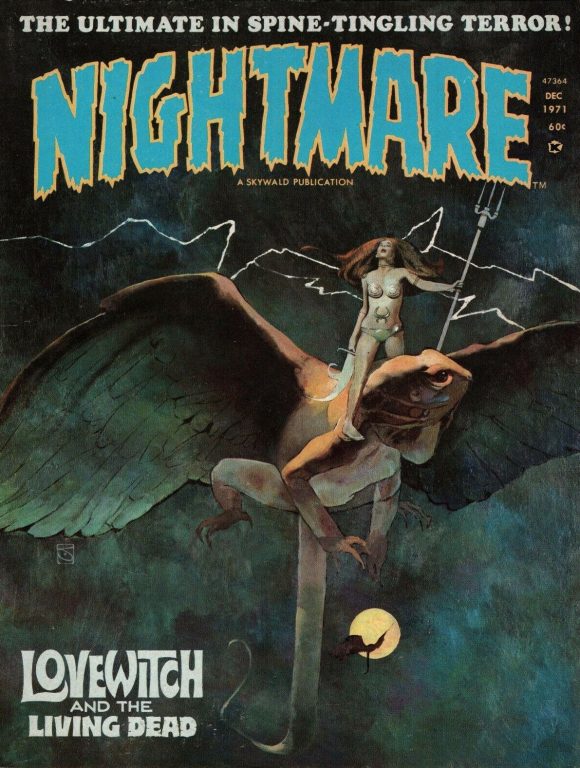
—
Psycho #1 (Jan. 1971). Despite some nifty covers by Boris Vallejo, Pablo Marcos and Jeffrey Catherine Jones later on in the 24-issue run (Jan. 1971 – March 1975) of this black-and-white horror title, I still have a soft spot on my head — I mean in my heart — for the first issue piece by Brendan Lynch.
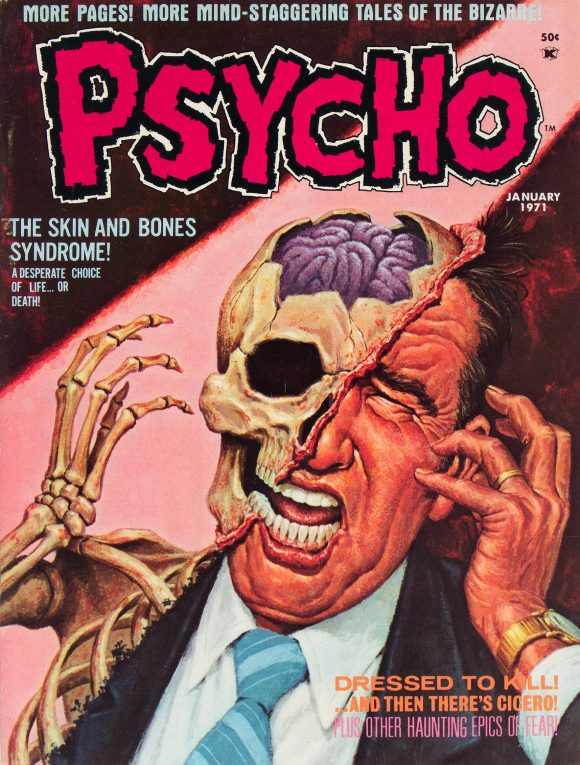
—
Psycho #12 (Aug. 1973). Another painted cover by Jones. What’s not to love?
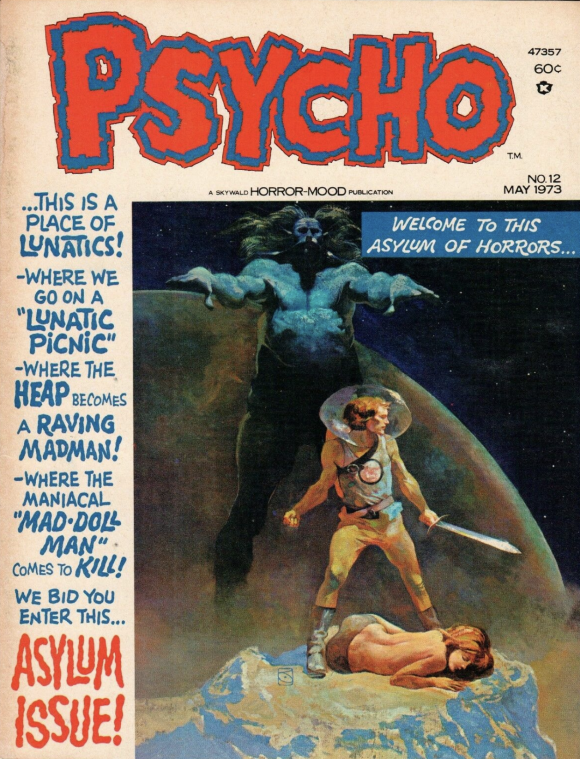
—
Scream #10 (Oct. 1974). Cover painted by Boada. For my taste, Scream had the weakest covers of all the Skywald magazines, with this one being the best of the lot in the 11-issue run (Aug. 1973 – March 1975) of this black-and-white horror magazine.
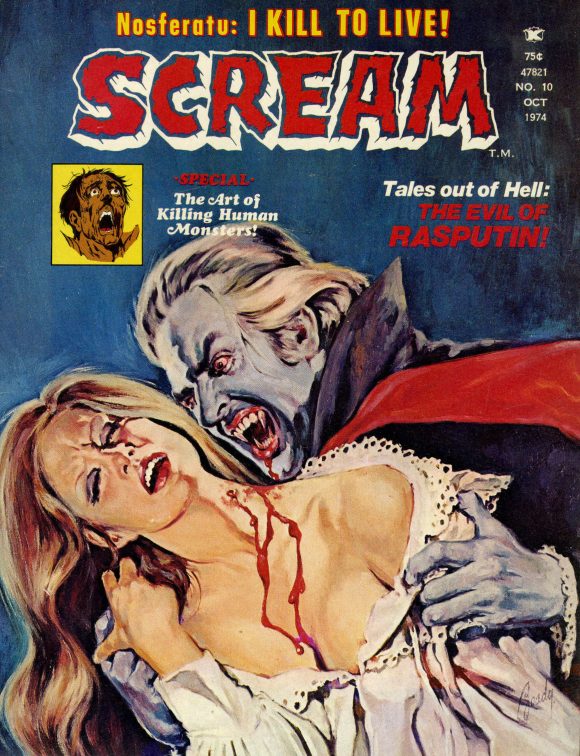
—
The Sundance Kid #1 (June 1971). Cover by Ayers and Severin. The Kid got his own short-lived title, featuring a 15-page new story by Wein, Ayers, and Tartaglione, backed up by more Avon, et al, reprints. Frankly, all three covers, penciled by the inimitable Ayers, are strong Western scenes but what sets this one apart, of course, are the inks by Severin, making it a collaboration between two of my favorite Western comics artists ever.
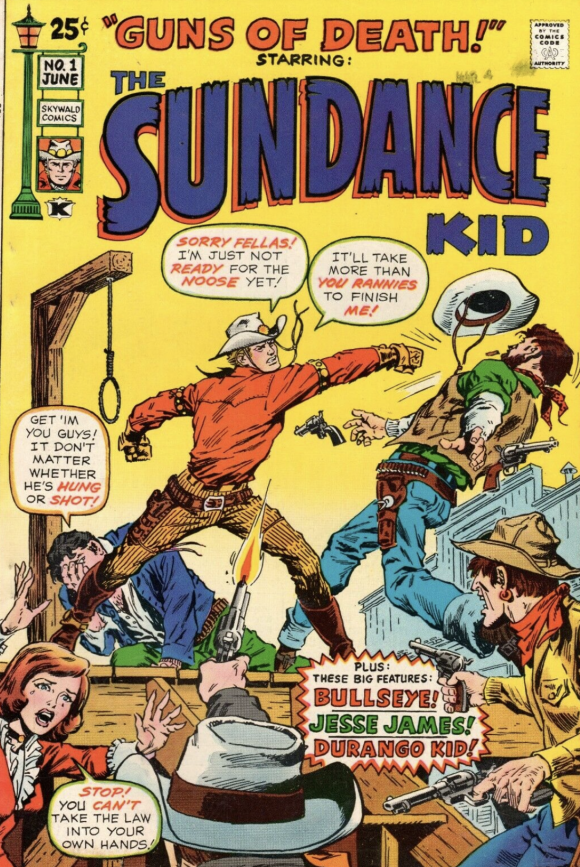
—
Tender Love Stories #4 (July 1971). Cover by Kurt Schaffenberger and John Celardo. No superheroes for Skywald, but they managed to hit just about every major genre (except science fiction) but definitely including (sigh!) love! Tender Love Stories was the longest lasting of the company’s color comics, going four entire issues with mostly retouched and updated reprint stories from Prize, Avon, and others. The title featured some nice covers, the first two by Don Heck, but I couldn’t resist this one, penciled by my old collaborator on Superboy for DC.
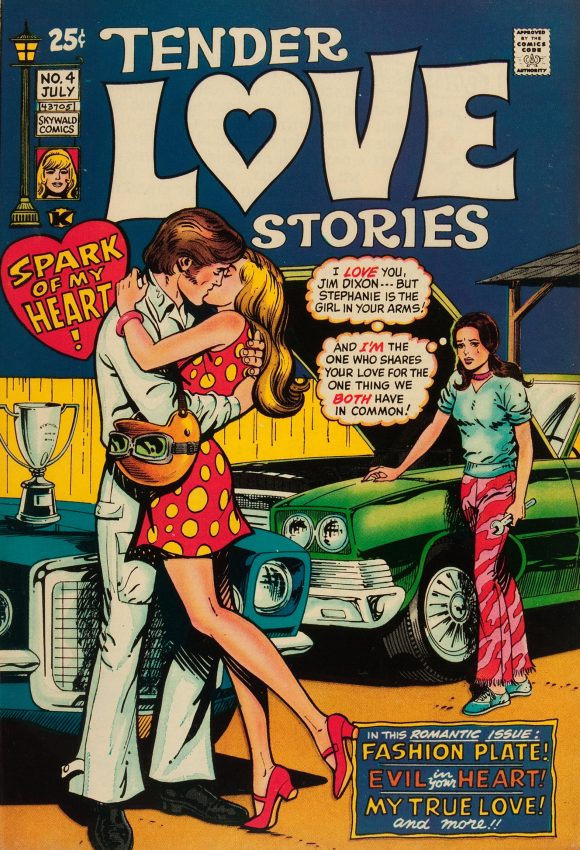
—
Wild Western Action #1 (March 1971). Cover by Shores and Esposito. Today’s covers are brought to you by the number “3,” as in here’s yet another Skywald title that only lasted that many issues. I don’t recall the premise of “Bravados” the 10-page lead by Wein, Shores, and Esposito, but according to the indispensible Grand Comics Database, it’s “The origin of how the Bravados banded together when Jefferson Drum was attacked by the gang that killed everyone in a small western town.” So, there’s that. And Durango Kid and Swift Arrow reprints from Magazine Management and Toby.
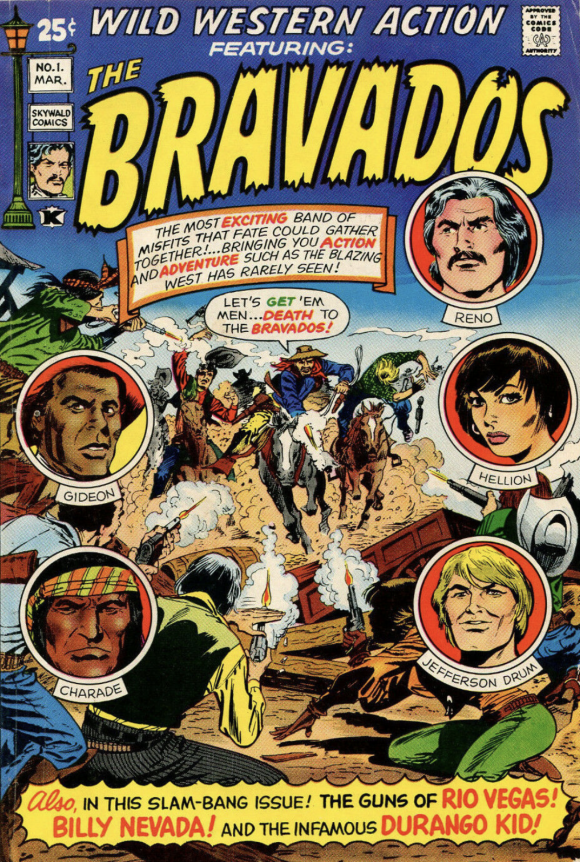
—
MORE
— PAUL KUPPERBERG: My 13 Favorite ATLAS/SEABOARD COMICS COVERS. Click here.
— PAUL KUPPERBERG: My 13 Favorite 1960s Gold Key Comics TV Adaptations. Click here.
—
Sure, you know Paul Kupperberg as the prolific writer of over a thousand comic books for such characters and series as Superman, Aquaman, Doom Patrol, Vigilante, Life with Archie, Bart Simpson, Scooby-Doo, and dozens more for DC Comics, Archie Comics, Bongo Comics, and others, and that he is also the creator of the series Arion, Lord of Atlantis, Checkmate and Takion, and is a former editor for DC, Weekly World News, and WWE Kids Magazine. But Paul is also the author of numerous books, including the superhero novel JSA: Ragnarok and the comics industry-based murder mystery, The Same Old Story, not to mention (but we will anyway) Paul Kupperberg’s Illustrated Guide to Writing Comics, I Never Write for the Money, But I Always Turn in the Manuscript for a Check, Direct Comments: Comic Book Creators in their Own Words, The Unpublished Comic Book Scripts of Paul Kupperberg and Son of the Unpublished Comic Book Scripts of Paul Kupperberg. You can follow Paul at PaulKupperberg.com and at Crazy8Press.com.

November 7, 2021
I so enjoy the history lesson. These are titles I’ve no memory of ever seeing. Thanks for sharing.
November 7, 2021
We aim to please!
November 7, 2021
Thanks for the rare glimpse into these titles. I only vaguely knew of Skywald. Honestly, in the past I often got them mixed up with Eerie Publications.
Looking through their output on Mike’s Amazing World of Comics (http://www.mikesamazingworld.com/mikes/features/publisher.php?publisher=Skywald), I was reminded of this cover. Nightmare #13 has one of the most unsettling and downright spooky images I’ve ever seen on a comic cover. It all feels so real, and the gentle snow makes it beautiful and repulsive at the same time. http://www.mikesamazingworld.com/gallery/!publishers/skywald/nightmare/nightmare13.jpg
I noticed some sneaky swipes from Horror Film stills on the covers of Scream. Issue #3 clearly depicts Christopher Lee’s Dracula, while issue #6 has his Hammer Horror colleague Peter Cushing’s Baron Frankenstein reworked and gored up. Issue #4’s werewolf seems to be based on a still from the late 50s Universal Sci-Fi horror, Monster on the Campus.
Thanks for the fun distraction! I enjoyed getting lost in the weeds with this publisher!
November 12, 2021
Did not know that Jack Katz passed away. Was a great fan of the First Kingdom, one of the best and first indie epics of the 70s. I couldn’t find an obituary online and his Wikipedia page doesn’t mention it… Great artist.
December 14, 2023
‘Their 64 page black and white magazines were heavily weighted toward reprints…’ I’m afraid your wrong on that one esp as regards the three horror-mood titles ‘Nightmare’ ‘Psycho’ and ‘Scream’ – the vast majority of issues being all original material penned largely by ‘Archaic Al’ Hewetson himself with art of the highest order by a stable of Spanish illustrators from the S.I. agency in Madrid – nothing ‘low rent’ about these publications at all.